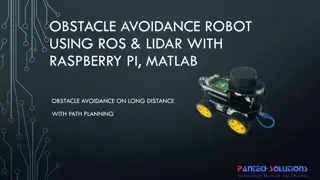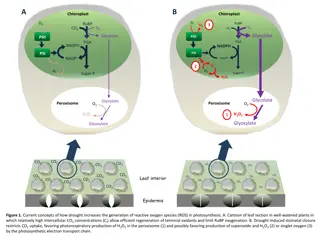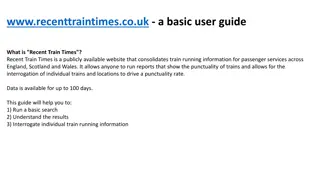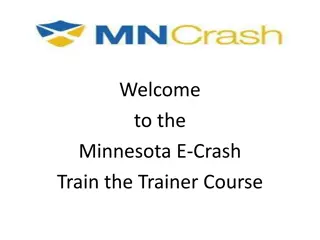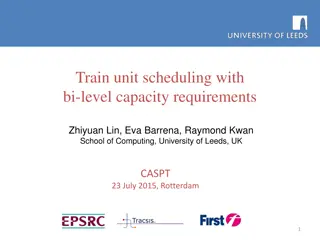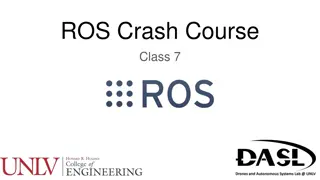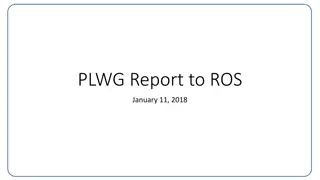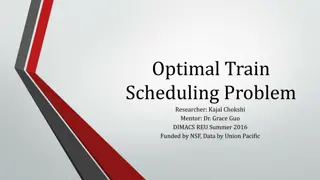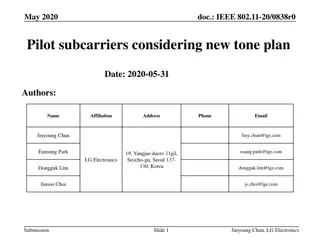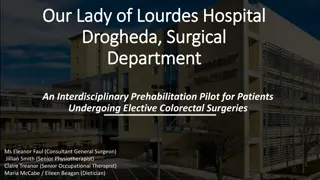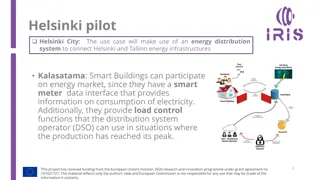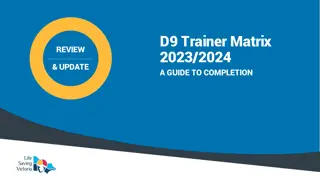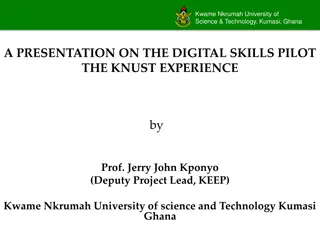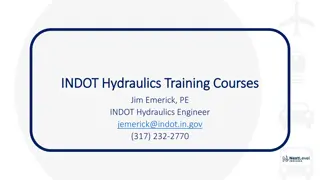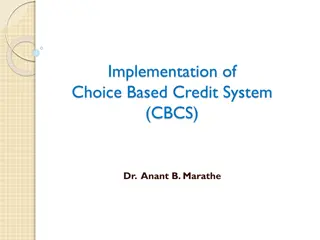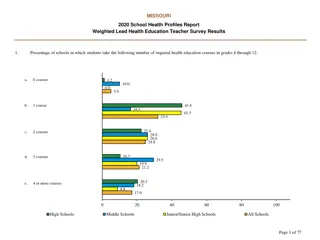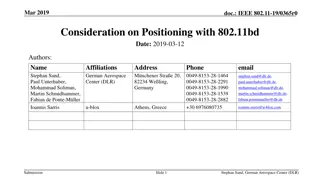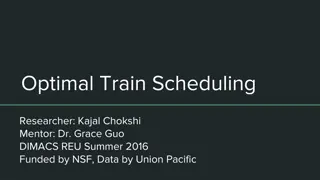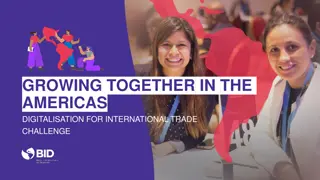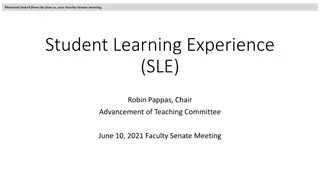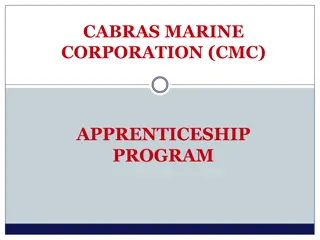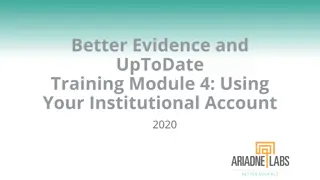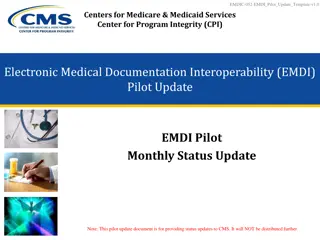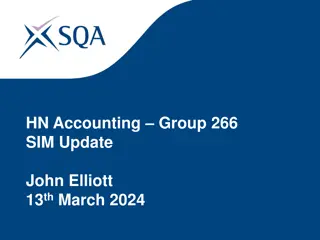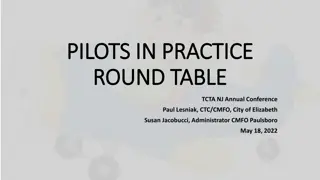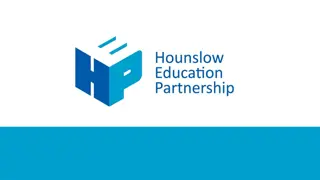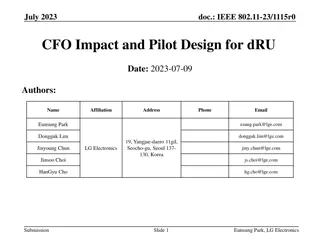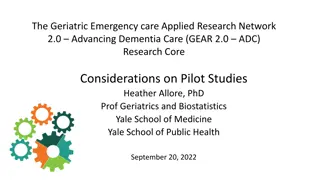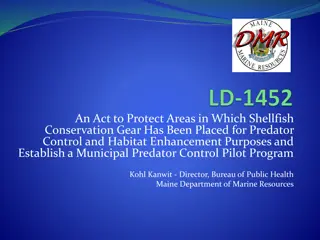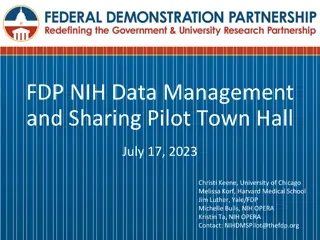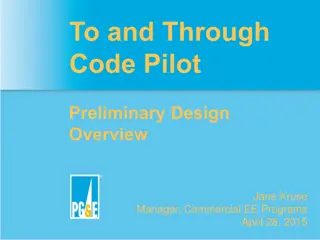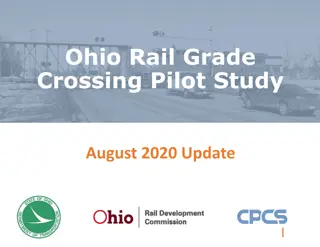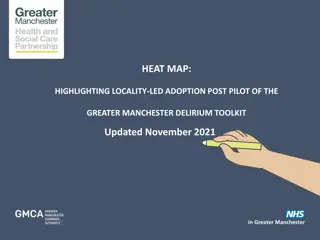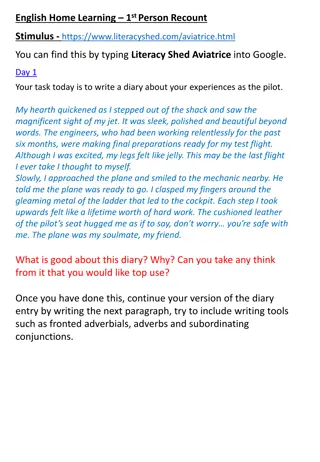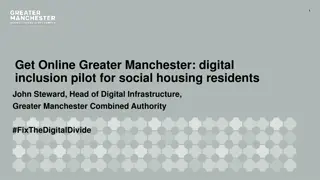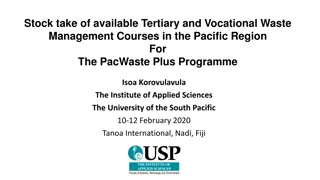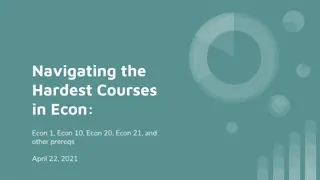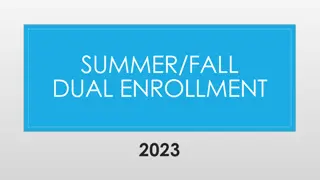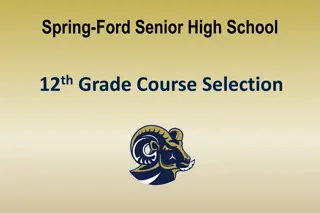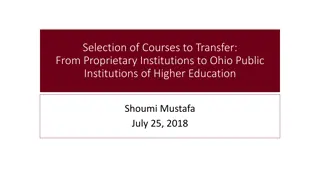Second Train the Trainer of Pilot Courses by Marika M. Sz.ros 2023
The second train the trainer session for Pilot courses was held to evaluate past experiences, analyze training methods, and plan for future courses. The event focused on constructive criticism, exam outcomes, and discussions on RPL issues. Participants discussed the role of RPL, pre-qualification of students, learning materials, and electronic resources. The importance of practical experience and student feedback were highlighted for course improvements.
Download Presentation

Please find below an Image/Link to download the presentation.
The content on the website is provided AS IS for your information and personal use only. It may not be sold, licensed, or shared on other websites without obtaining consent from the author. Download presentation by click this link. If you encounter any issues during the download, it is possible that the publisher has removed the file from their server.
E N D
Presentation Transcript
2nd TRAIN THE TRAINER of Pilot courses Created by: Marika M sz ros 2023. 04.25.
Content 1. Introduction 2. Discussion 3. Conclusion 4. Appendix
Introduction Location: MHtE Date: 2023.04.25. Course: personal participation Object: development of teaching methods Participants: 11 teachers
Introduction This meeting was set up to discuss with the trainers the experience gained on the Pilot courses and to prepare for future courses. Unfortunately, there were only six applicants for the PILOT course, so a second course was organized in a similar way with 19 applicants including three engineers. By analyzing the activities of the two groups, more valuable results were obtained.
Introduction Constructive criticism from all participants was expected on the organization of the course, the materials posted in ITSLEARNING, the work experience of the students recruited. The comments also covered RPL issues. These questions were asked in front of each CU and their basic role was to help the trainers to plan their teaching activities on this basis.
Introduction The exams were successfully passed by the students. During the discussion, the examiners were also asked for their views on any shortcomings they had encountered. The examiners' opinions indicated that the preparation time was very short. The syllabus is very large, and it was difficult for the students to understand the steps of the audit without much practical experience. As the students were of adult age, they quickly realized the usefulness of the knowledge they had received and made a conscientious effort to acquire the material.
Discussion Agenda Role of RPL issues Pre-qualification of the students recruited Own learning materials Usefulness of electronic learning materials Opinions on CU Possible improvements, ideas, methods
Discussion Role of RPL issues The RPL questions in CU1 were related to product responsibility, product quality, NDT-DT experience and inspection. Students had a basic knowledge of these areas on which to build during the course. CU1 questions were prepared by B la Gayer. One of the fundamental functions of the RPL questions was to help create two (possibly more) groups within a single course, but this could not be achieved due to the small number of participants. In the following courses, teachers should prepare RPL questions in front of their own syllabus. This way they can see for themselves which areas are less well known and need to be explained in more detail.
Discussion Role of RPL issues The use of Itslearning has proved to be beneficial for students. They found the assessment of prior knowledge a good idea, as well as the fact that the trainers adapt the course materials accordingly. They were able to access the questions through the system and answer them here. The main shortcoming was that the questions were in English, which made them difficult to understand. It is proposed to add four multiple-choice questions to the yes-no only RPL questions.
Discussion Role of RPL issues In the second course, there were two instructors to teach non- destructive testing. The following questions were asked before the lectures: Do you know what NDT test is? Do you know the main NDT test methods? What are the methods of determining surface deviations? What are the methods for determining volume (internal) differences? Students who have reached level 2 in the NDT examination are exempted from the material of the procedure.
Discussion Previous qualifications of the students Students enrolling on the production inspector course were usually welders and may have done inspections in addition to their basic job. They also had some hidden experience and knowledge that helped them to understand the tasks related to organization and control. The training had a prerequisite of welding knowledge, which required an international welding course. People who did not have an international certificate could also join the training but then they only received a certificate of completion not a diploma. In this case of course the examination requirements were different.
Discussion Previous qualifications of the students The trainers are of the opinion that the advertised application criteria must be met in order to understand and master what is taught in the course. To apply, you must have completed at least three years of technical college. Students first attended a 75-hour welding technology course and then, after passing the exam, they could start the 102-hour welding production supervisor training. Students who already had an EWS or IWS diploma could directly join the 102 hours of theoretical and practical training for production inspectors.
Discussion Tutors' own teaching materials The trainers have developed their own teaching materials in ppt format. Some trainers added a short film clip which was very well received by the students. We need more of the same. There was also a need to explain standards which cannot be distributed in paper or online format according to Hungarian legislation, the teaching method here is projection and explanation. Companies should obtain the necessary standards on their own. There is a need for more group sessions, only one or two trainers have used this possibility.
Discussion Electronic learning materials The main problem here was language. Itslearning has a lot of useful material, but in English. The students all knew some level of English, but this proved insufficient to understand the material. The MHtE helped Matrai with this and translated some of the course materials into Hungarian. In addition, the students were also provided with high quality course material in book form. There is a need for an electronic library in Hungarian.
Discussion Opinions on CU During the course, the potential of the CUs was not fully exploited. There were opportunities to develop the IT competences of students and trainers. The possibility to upload video material and images was not exploited. Most of the resources uploaded were not used because of the foreign language. Both the RPL and the CU post-test were insufficient and need to be replaced and continuously improved. Few ZOOM meetings have taken place. A Facebook or Messenger group could have been run during the course and for ongoing contact later. Learners could also make their own videos at the workplace, there were no examples of this either. Although teaching materials were uploaded to the Its learning system, students received these on a thumb drive. Students used mobile phone and thumb drives, tutors used computers and TV screens.
Discussion Possible developments, ideas, methods For theoretical training, it is advisable to choose one of the blended learning methods. Blended learning is an educational technology that provides a variety of learning environments (methods and tools) - traditional and virtual classroom learning, face-to-face and distance learning, print and electronic learning materials, high quality info communication tools - to make learning material available in a cooperative, varied and individualised way, and to monitor and evaluate the progress of learners.
Discussion Possible developments, ideas, methods There are several types of blended learning, in our case, for example, trainers can choose between: 1. learning environment rotation: classroom traditional and home on- line; 2. individual rotation: the student learns in different ways, including on- line; 3. self-blend model: in addition to traditional training, some subjects are studied on-line, either in class or from home; 4. enriched virtual model: training starts in a traditional way and continues on-line after successful progression.
Discussion Possible developments, ideas, methods The amount and quality of students' prior knowledge and preparation is essential, and whether they can study independently to complete the course. Very important what is the quality of their ICT equipment, the availability of tools, for example there is a computer in the family but there are five users. In blended learning, the work of a teacher becomes more difficult, but they can be prepared to organise project work. He can also tailor the work of individuals, for example in an individual rotation model.
Discussion Possible developments, ideas, methods Activities can be structured with access to online resources, communication via social media or interacting with students remotely in other classrooms or other learning environments.
Discussion Possible developments, ideas, methods Welding specialist training is a work-based course. The knowledge required can be taught well by doing practical exercises alongside the theory, so the methods must take this into account. Different vlogs can be presented for practical training. In the case of professional blogs, the use of video blogs (vlogs) for sharing content is still less common, but some can be found in the case of non-destructive testing or welding: https://www.youtube.com/c/WelderVlog?app=desktop https://www.youtube.com/watch?v=8I1onrUqjDA https://www.youtube.com/shorts/rjfhStWm6-8 https://www.youtube.com/watch?v=dikGC6B_xCY
Conclusion The students' responses indicate that they found the preparation materials, complemented by the lectures, sufficient. If they had any difficulties in solving the problems, they could reach the instructor who was willing to help them. From the replies it is clear the use of the learning support system (Its learning) was natural and did not cause any difficulties. The classroom lectures themselves were informal and questions could be asked at any time, which was unanimously welcomed by the students. They also contributed to a topic by sharing their own experiences. As welders, their knowledge of manufacturing, welding, material certificates and material testing varied, and the course gave them a systematic and consistent knowledge. They were able to use the skills they had acquired in their previous work. The responses also showed that students were satisfied with the teaching, the teachers and the learning management system.
Appendix PAKS-course evaluation-rev01_Marika



